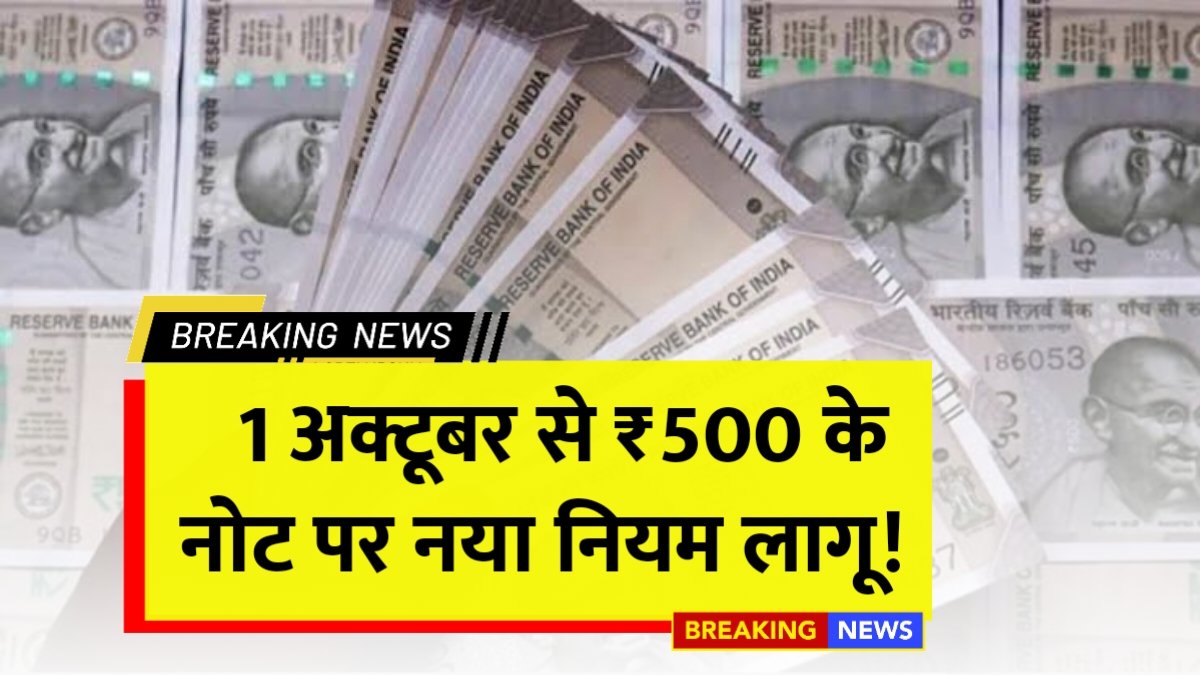In a bid to combat the rising circulation of counterfeit currency, the Reserve Bank of India (RBI) has announced a major regulatory change concerning ₹500 notes, which are widely used in daily transactions across the country. Starting October 1, 2025, new rules will govern the use and acceptance of ₹500 notes, aiming to strengthen India’s financial system and curb the spread of fake currency.
The RBI’s decision is not just a policy update—it’s a strategic move to restore public trust in the currency and protect citizens from financial fraud. Over the past few months, several states have reported a surge in counterfeit ₹500 notes, with criminals using advanced printing techniques that make fake notes nearly indistinguishable from genuine ones. Small vendors, auto drivers, and daily wage earners have been the most vulnerable, often unknowingly accepting fake notes and suffering financial losses.
To address this, the RBI has imposed a new transaction limit for merchants. No business establishment—whether a roadside stall or a luxury showroom—will be allowed to accept more than ₹10,000 in ₹500 notes in a single transaction. If a customer attempts to pay with 21 or more ₹500 notes, the merchant must refuse the payment. Violations could lead to penalties and even affect business licenses. Merchants are now required to offer digital payment options such as UPI, cards, or wallets, and encourage customers to use smaller denominations or digital methods for larger payments.
The rules for depositing ₹500 notes in banks have also been tightened. Individuals holding large quantities of ₹500 notes must present valid identification, including Aadhaar and PAN cards, during deposit. Each note will be carefully inspected by bank officials to ensure authenticity. If any counterfeit note is detected, it will be confiscated immediately, and legal action may follow. Citizens are urged to accept currency only from trusted sources and report any suspicious notes to nearby banks or police stations.
To help the public distinguish between real and fake notes, the RBI has released guidelines highlighting key security features. Genuine ₹500 notes include a watermark of Mahatma Gandhi, a color-shifting security thread, microtext with “RBI” and “₹500,” tactile marks for the visually impaired, and superior paper quality. Fake notes often lack these features or are printed on thinner, smoother paper. The RBI encourages everyone to learn these identification methods and inspect notes carefully during transactions.
This new regulation is expected to significantly boost digital payments across India. With cash transactions now limited, more people are likely to turn to UPI apps, debit/credit cards, and QR code-based payments. The move aligns with the government’s Digital India mission, promoting a cashless economy and reducing the risk of counterfeit currency. Small businesses are advised to adopt digital payment systems, which are easy to set up and cost-effective.
From October 1 onward, citizens will need to adjust their habits regarding cash usage. Large payments should be made digitally or with smaller denominations. Merchants must train staff to identify fake notes and display notices informing customers of the new rules. Banks may experience increased footfall as people rush to deposit old notes, but the long-term benefits include a more transparent and secure financial ecosystem.
Disclaimer: This article is intended for informational and awareness purposes only. For official guidance, please consult your nearest bank, the RBI’s official website, or an authorized financial institution. The author and publisher are not responsible for any loss or damage resulting from the use of this information.
